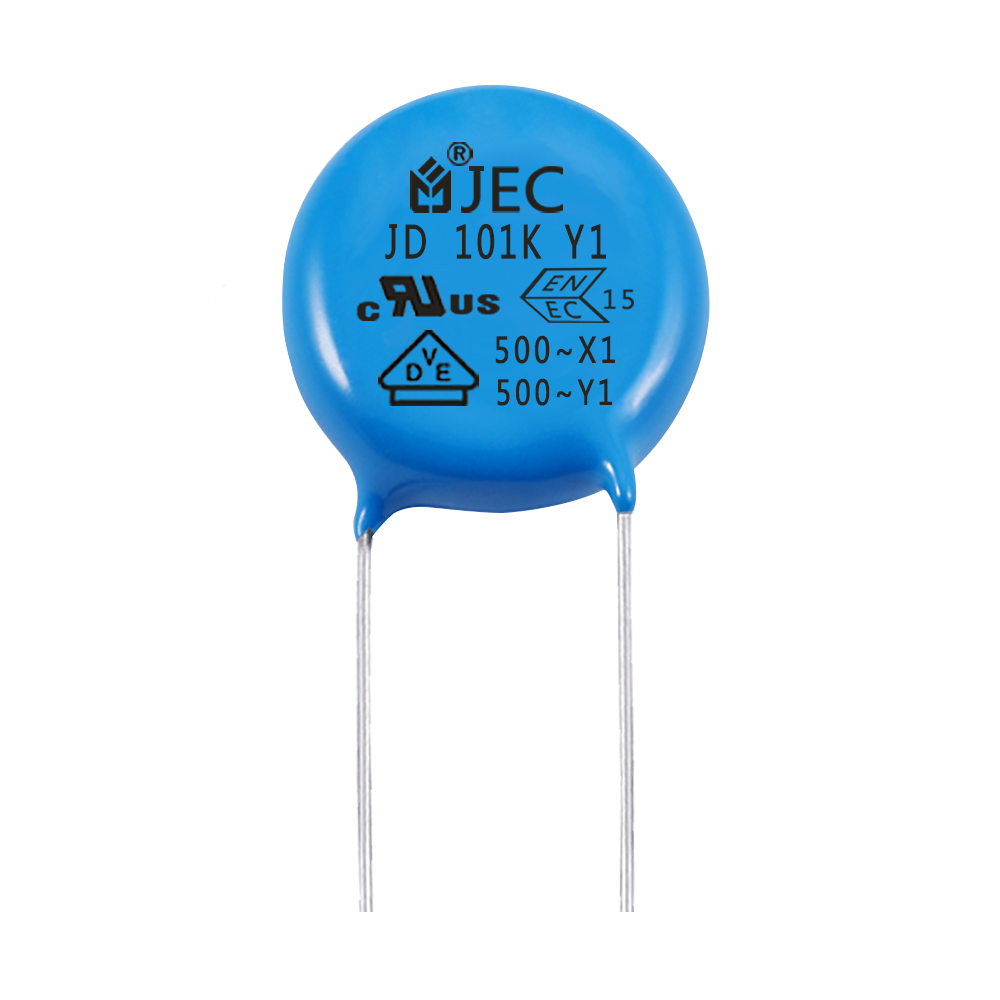Ceramic capacitors are made by pressing high dielectric constant ceramic material (barium titanate or titanium dioxide) into cylindrical, disc-shaped, or disk-shaped forms as dielectrics. Silver plating is used as the electrode for ceramics through a process known as firing. They are divided into high-frequency ceramic capacitors and low-frequency ceramic capacitors. Capacitors with a small positive temperature coefficient are used in high-stability oscillation circuits, as circuit capacitors, and as bypass capacitors.
Low-Frequency Ceramic Capacitors
Low-frequency ceramic capacitors are limited to use in circuits with low operating frequencies, either as bypass or DC applications, or in situations with low requirements for stability and loss. These capacitors should not be used in pulse circuits because they are easily damaged by pulse voltages.
High-Frequency Ceramic Capacitors
High-frequency ceramic capacitors, used in high-frequency circuits, come in foil-type and silver-type structures. Silver electrodes are directly deposited on mica sheets using vacuum evaporation or firing to eliminate air gaps, significantly reducing the temperature coefficient and ensuring high capacitance stability compared to foil-type capacitors. They have good frequency characteristics, high charge values, a low temperature coefficient, but are not suitable for high-capacity applications. They are widely used in high-frequency electronics and can serve as standard capacitors.
Glass Glaze Capacitors
Glass glaze capacitors are coated with a special mixture suitable for thick coating, and the dielectric is sintered into a “monolithic” structure with silver layer electrodes. Their performance can rival that of mica capacitors, and they can withstand various weather conditions. They generally operate above 200°C, with a rated working voltage of up to 500V.
Post time: Sep-22-2023

